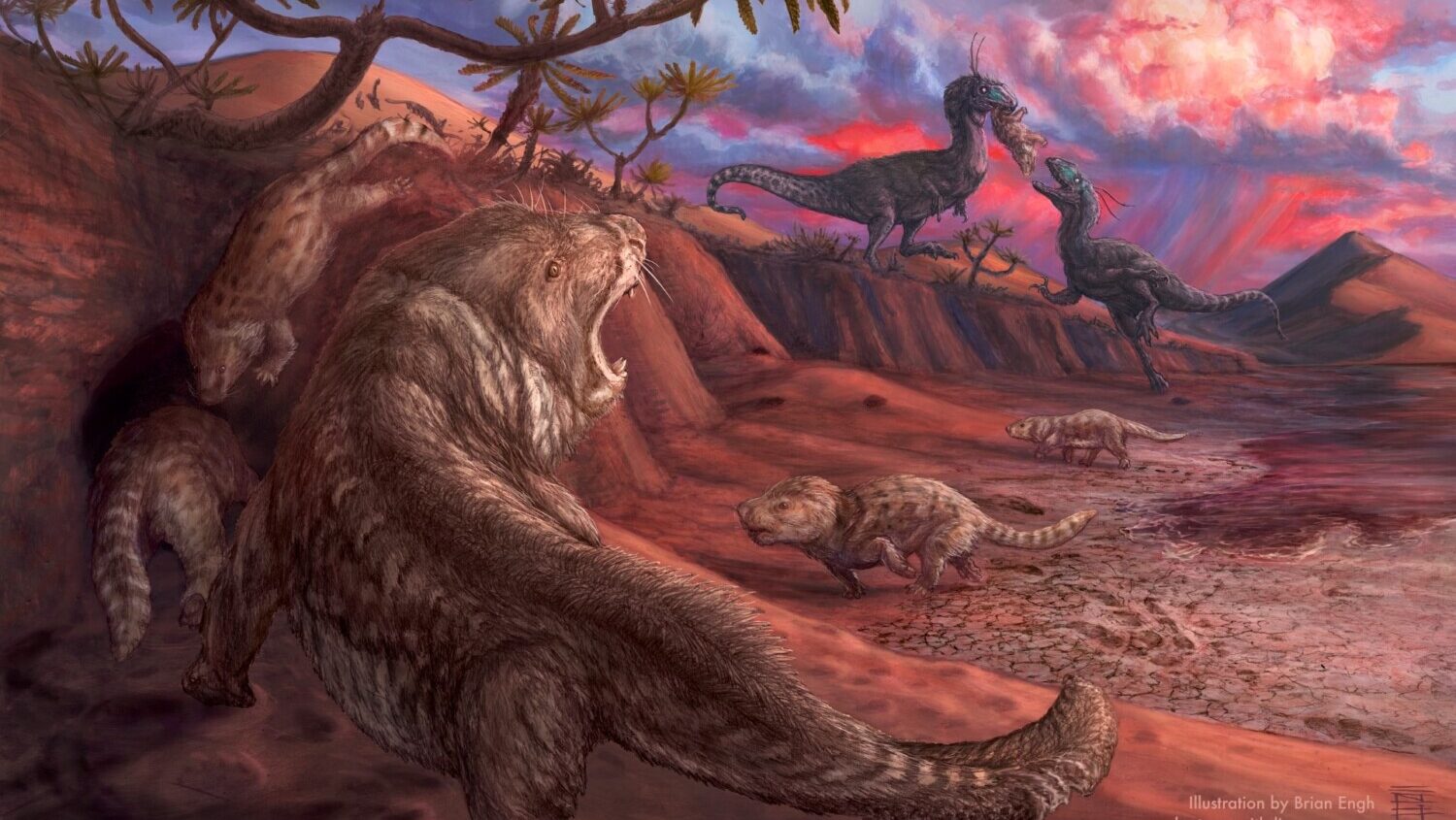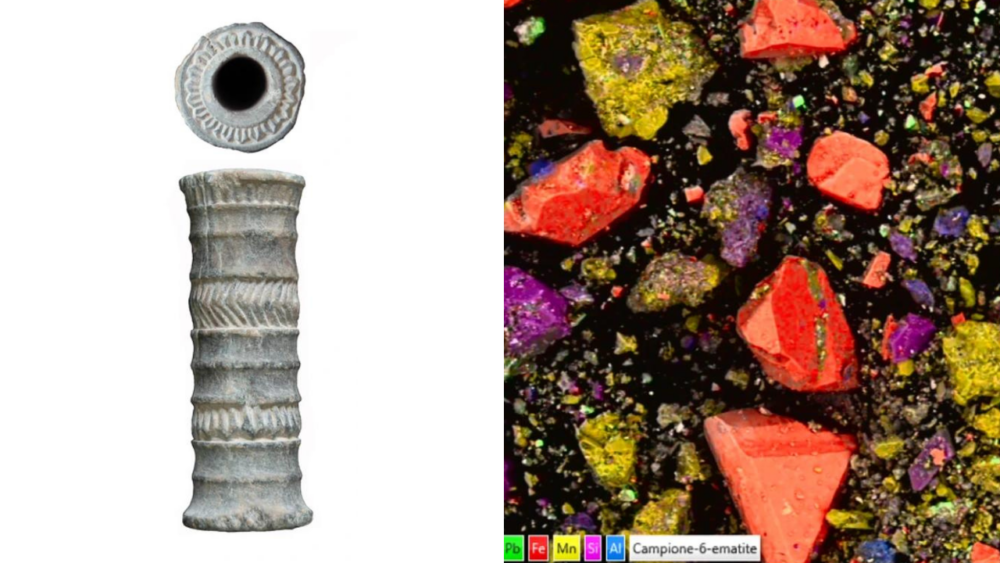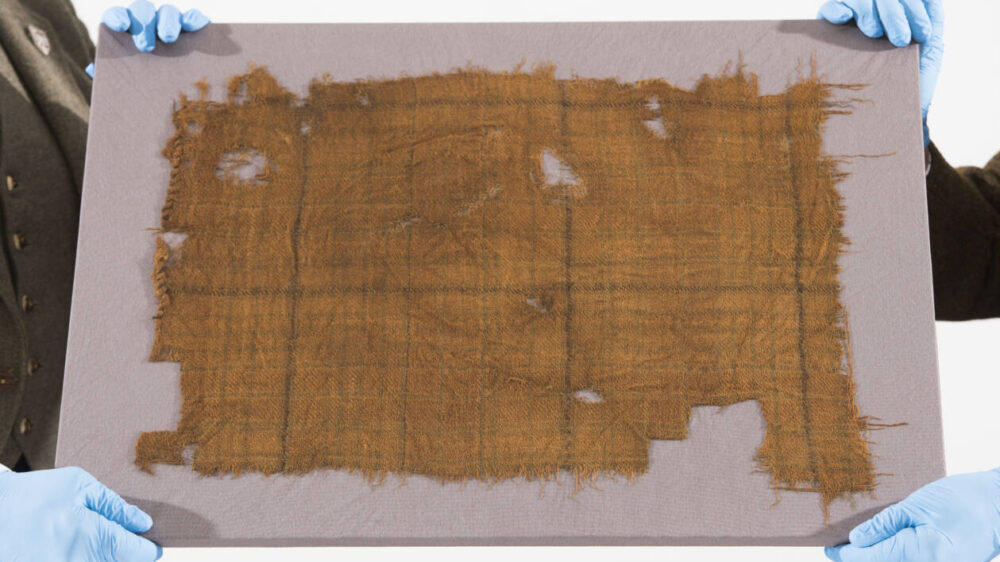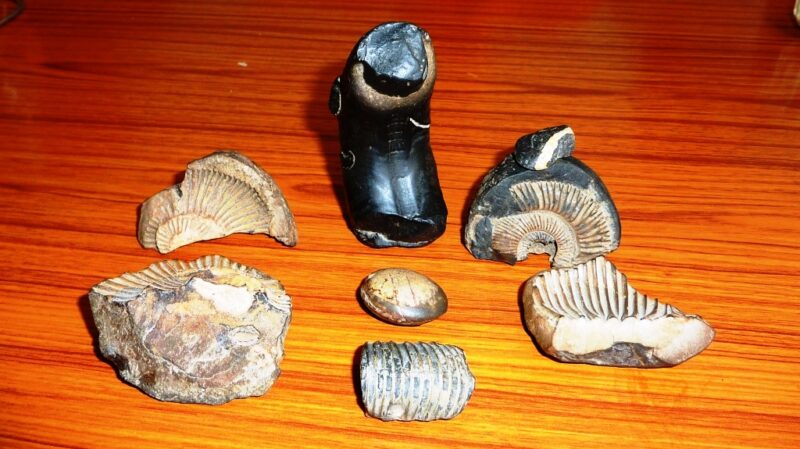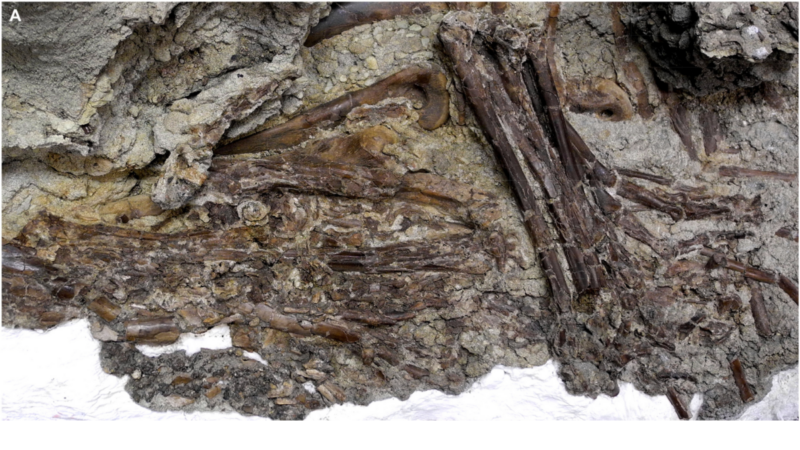Rare mammal-like fossils from Jurassic discovered in Utah
Paleontology is a profession that requires a lot of scientific skill and careful study. But a group of researchers in Utah found that luck also plays a part when they found a group of rare and important fossils along the shoreline of Lake Powell.
The National Park Service released the details of the discovery, which happened in March, on Oct. 11. It notes that a field crew of paleontologists was combing a site in the Glen Canyon National Recreation Area when they came upon a rare bonebed full of bone fragments and other impressions from Jurassic-era tritylodontids. The timing was key since the area was only going to be accessible for roughly 120 days before an annual snow melt brought water levels up and covered the ground.
MORE: Researchers identify new ‘Snakey Crocodile-Face’ reptile from Cretaceous period
The NPS illustration below was made by artist Brian Pugh to show what the scene might have looked like in the Jurassic era. In it you can see a group of tritylodontids in the foreground, doing their best not to end up in the wrong end of the food chain. While they may resemble otters or ferrets, the animals are actually cynodonts — a form of reptile and a precursor to the early mammals that scientists believe began to appear in the Triassic period roughly 200 million years ago.
Researchers gathered several hundred pounds of rocks containing the tritylodontid fossils at the site, along with more bones found at the nearby Kayenta Formation. After scanning at the University of Utah South Jordan Health Center and study at the St. George Dinosaur Discovery Site, they will become part of the museum at the Glen Canyon National Recreation Area.
MORE: Paleontologist and volunteers find rare dinosaur bone in fossil park
The site was “one of the more important fossil vertebrate discoveries in the United States this year,” according to the National Park Service. In their press release, they also noted that “studying these fossils will help paleontologists learn more about how early mammal relatives survived the mass extinction at the end of the Triassic Period and diversified through the Jurassic Period.”


